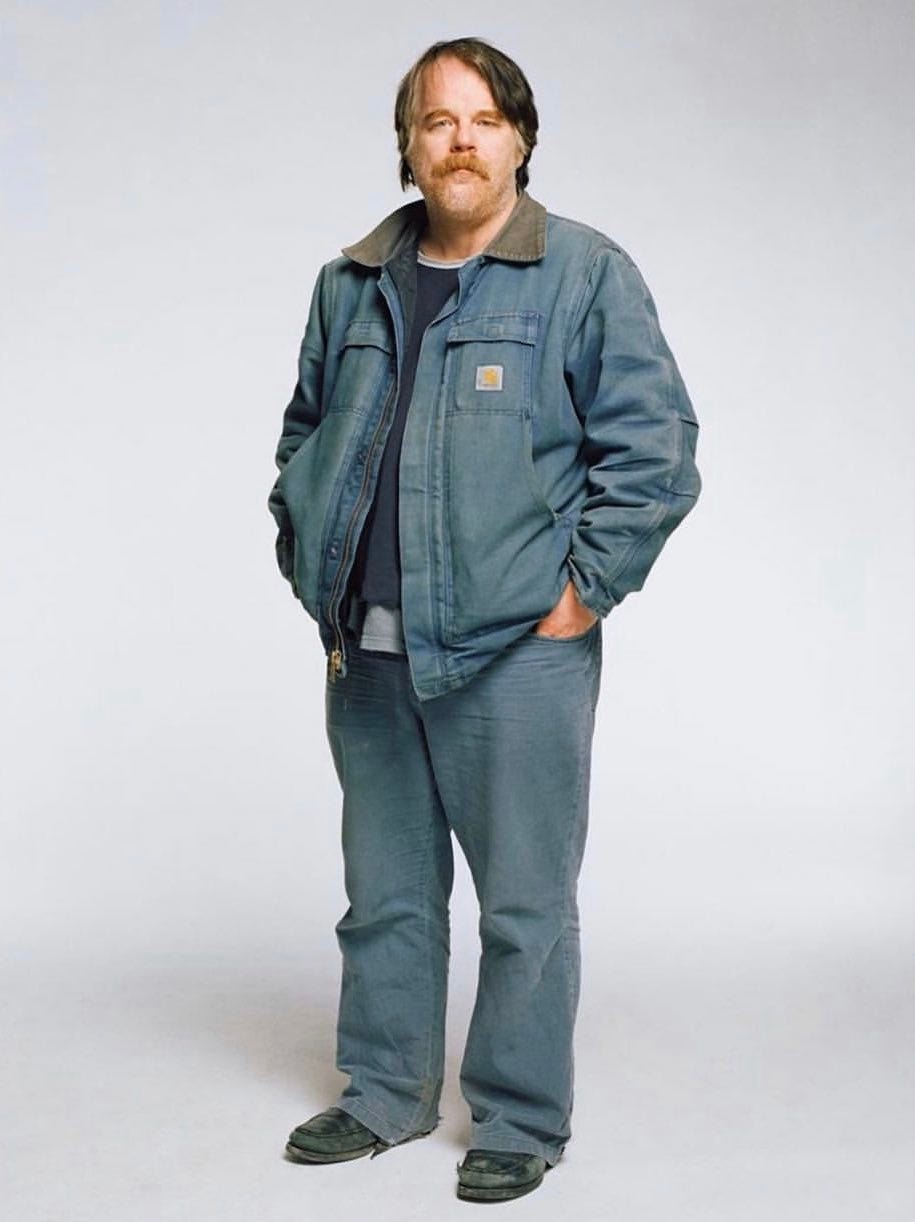A couple weeks ago, while pacing around a parking lot, I discovered a Carhartt hat laying on the ground. It was dirty, but intact. Being an enterprising hobo of the 21st century, I picked it up, brought it home, and washed it. It came out looking pretty good, as you can see in the photo above. I’ve been wearing it regularly since. It gets cold here in Michigan during the winter, and I’m bald, so I’m always in need of proper headgear.
Michigan guy wearing a Carhartt hat during the winter. Checks off a lot of boxes, doesn’t it? Place an IPA in my hand and let me cheer me for the Red Wings, and I thereby become the embodiment of White Michigander Dude. It was easy, almost too easy. Which was just what I had always worried about.
Before this, I had never owned an item of Carhartt apparel. I never saw myself as belonging to the brand’s demographic. Who knows, perhaps the brand itself viewed me with similar suspicion. But brands change their minds—and perhaps consumers can too.
Let me back up. I was, as I obsessively reiterate on this space, raised in rural Indiana, in the 90s. Carhartt apparel was a common sight there. I saw men–and it was nearly always men–wearing Carhartts all the time. They were men unlike me. Working-class men, to use the parlance of the day. White working-class men. A type stands out: the man who worked in landscaping in some sort, digging tree stumps out of the ground with rope and the winch hitched to the back of their pickup truck. An actual pickup truck, natch, with a functional flatbed. None of these Mega-SUVs you see today.
These were the men who wore Carhartts. Carhartt hats; Carhartt jackets; Carhartt jumpsuits. And that was not the kind of man, or boy, I was. I knew that, or rather, I sensed it, as I lacked the language for putting these concepts into words. I belonged to a lower-middle-class family. My father, who worked as a pastor for a time, was something of an evangelical equivalent to the peripatetic intellectual of today. Where the literari hop from one poorly-paid lecturing gig to another, my father traversed the most unremarkable towns of northern Indiana, ministering to ever-dwindling congregations. Carhartt men occasionally belonged to those congregations, and they showed my father an unusual deference, which only made me more self-conscious. Whatever trait my father possessed, that made these men defer to him, was one that I obviously lacked. The Carhartt men did not defer to me; they intimated me.
And so off I went to college, and forgot about the Carhartt men. I graduated. I established myself in a midsize city of the Middle West. And I soon discovered that, all along, the Carharrtt men had been following me. There they were, around every corner. Carhartt had become a brand popular with Urban Dudes like myself, as detailed in this New York Times article. Perhaps the prototypical image of the Urban Carhartt Dude is this photo of Philip Seymour Hoffman, looking resplendent.
Man looks good, is what I’m saying. But I remained perplexed. Why were these urban guys working web design jobs wearing the same clothes as the tree stump guys of my rural Indiana youth? Was that not, in some sense, cultural appropriation?
The urban-rural divide has grown ever wider in the last 25 years. The 2000 election is a good marker, and George W. Bush an appropriate avatar of that chasm. Think of it: Dubya proudly wore the garb of the working Texan man, all boots and cowboy hat, even though he was about as far from the working class as one could get. He went to private schools on the East Coast. He hailed from fabulous wealth. He summered in Kennebunkport, for God’s sake. Yet once he put on that hat, everyone, right and left, was happy to take him at face value as the Marlboro Man come to life.
He proved an important point in the 2000s. Fashion signifiers of white rural maleness could be worn by almost anyone. Hipsters from Williamsburg to Berlin wore trucker hats at the time, that wearable, removable image of Working White Guy, ending up in the pages of Vice. And that trend continued even as the rural-urban chasm divide grew ever wider, with the 2008 election, and again, irrevocably, with 2016. The city and the country were no longer on speaking terms. But the city still raided the country’s closet for its latest look.
Perhaps this is what happens: rural-raised guys like myself get out of their small towns, make it to the city, and then look back wistfully at the male fashions of their youth, and try to recreate them with Carhartts bought from Urban Outfitters. Maybe? For some? But I will say, I resisted that urge for a long time. Some of the guys I saw wearing Carhartts simply hadn’t grown up in the kind of rural settings I had, and thus had no previous association with the brand. They wore them because they looked cool, full stop. And they were right: they do look cool. But I, with my rural-raised chip on my shoulder, felt they didn’t deserve to look that cool, not like that. They hadn’t grown up in Indiana! They hadn’t felt outclassed by the Real Rural Men! How could they deserve to dress like them?
But you know what? I can’t tell others how to dress. I can only do that for myself.
I found the Carhartt hat in a parking lot, but did I mention where? It was a parking lot in my hometown, in Indiana. I was visiting family. My rural homeland bestowed the hat upon me. “Here, Adam,” said Indiana. “Wear the hat. You look good in it. You deserve it. If anyone else can wear a Carhatt, so can you.”
You can, too. And if you can’t find one in a parking lot, I hear that H&M is having a sale.




I feel this one. My dad was a wearer of Carhartt and rural blue-collar to the core (still is) — a welder by trade, a man who fixed his own cars, did his own plumbing, chopped down his own trees, etc. I was the kid he grumped at for “sittin’ around reading” instead of helping him in the garage or playing outside. So I’ve always been a little resistant to work wear. Problem is, it looks really good on fat bearded guys like me. So I should probably get over my hangups.